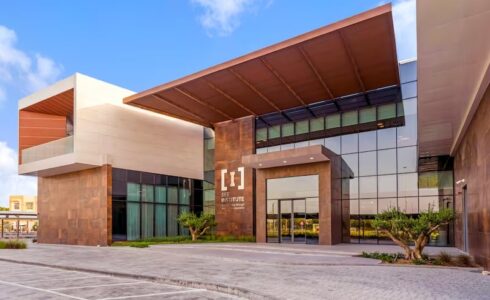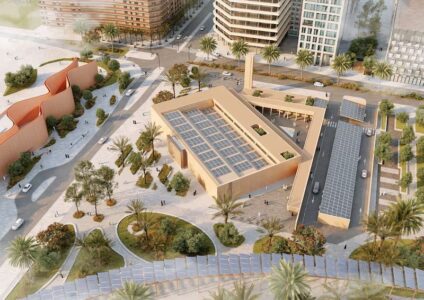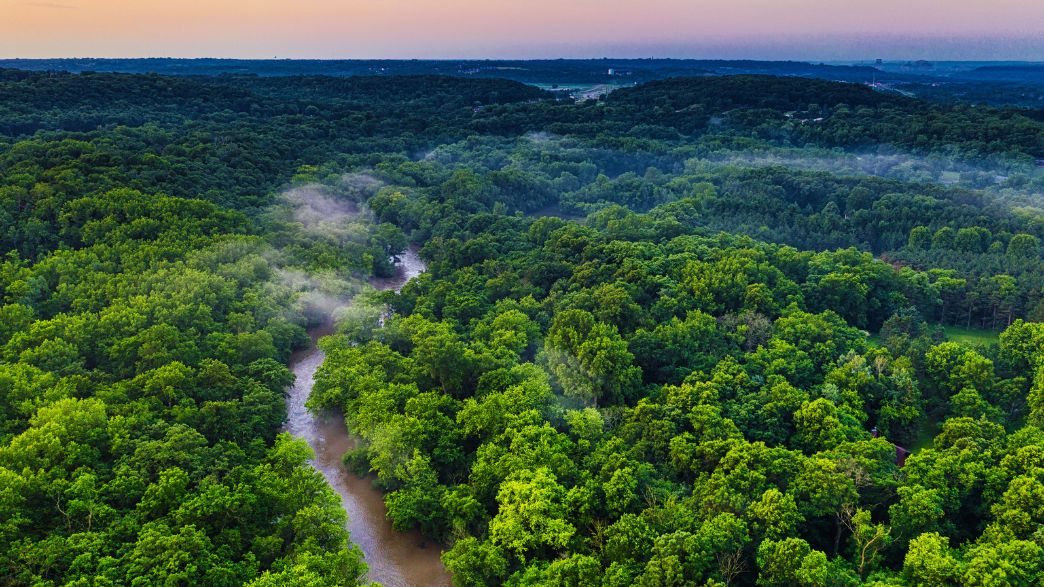As the UAE marches towards its national goal to achieve net-zero emissions by 2050, several buildings across the Emirates are already operating at zero energy.
But the SEE Institute, a hub for sustainable education and research in Dubai’s Sustainable City, claims to be the region’s first operational net-zero emissions building, producing 300 per cent of its own energy needs.
“Several buildings and projects are adopting ambitious sustainability measures. However, SEE Institute is proud to be the region’s first operational net-zero emissions building,” said Dr Fadi Al Faris, chief executive of SEE Enviro, part of SEE Holding, the developer of the SEE Institute.
“We consider the building a proof-of-concept and an inspiration to bring net-zero targets forward. Our work creates a ripple effect that extends far beyond our building, inspiring real change and making a lasting impact.”
What is a net-zero building?
There are differences between zero energy and zero carbon buildings, as well as what it really means to be “net zero”.
“In a net-zero energy building, all the energy consumed over a year is produced through on-site renewables, resulting in a zero annual energy bill,” explained Khaled Bushnaq, chairman of the Emirates Green Building Council.
“A nearly zero energy building just falls short of producing enough renewable energy to offset 100 per cent of the energy.”
Dr Al Faris said it’s also important to distinguish between achieving net-zero energy and net-zero emissions.

“While reaching net-zero energy can be relatively straightforward – by ensuring that a building produces as much renewable energy as it consumes – achieving net-zero emissions is far more complex. The most challenging part is offsetting the carbon emissions associated with the building’s construction, or the upstream embodied carbon.
“This requires a clear roadmap and an actionable plan to offset all these emissions effectively.”
Inside the SEE Institute
While the SEE Institute has been operating at zero emissions since day one, and currently produces twice the amount of energy it needs – with the surplus going back into the electricity grid – it won’t actually meet its net-zero target until 2030. That is because it is still offsetting the carbon emissions generated during the construction phase.
“Achieving net-zero emissions at SEE Institute has been a comprehensive and deliberate process, focused on sustainability from the ground up,” said Dr Al Faris.

“We began by conducting a full life cycle assessment, which allowed us to measure and minimise both embodied and operational emissions. This approach ensured that the building was designed and constructed to meet strict environmental goals, starting with locally sourced, prefabricated structural elements, low-emitting concrete, and recycled steel to reduce emissions from material production and transportation.”
Bifacial solar panels have been installed on the roof and in the parking areas, which allow it to produce so much of its own energy.
There is also a smart building management system to optimise energy use and the building recycles 100 per cent of its water. It also uses humidity harvesting technology that effectively turns air into drinking water.
“What’s often overlooked about operating a net-zero building is that it’s not just about the advanced technologies or the efficient design – it’s equally about the people who use the space and the choices they make every day,” said Dr Al Faris.
“A net-zero building provides the infrastructure to achieve sustainability, but the key to maximising its potential lies in education and fostering sustainable practices among its occupants.”
Other net-zero projects in the UAE
There is no specific data available on how many buildings in the UAE operate at net-zero energy, said Mr Bushnaq, but he confirmed there are “several”, including many that are under construction.
In Masdar City, the sustainable business and technology hub in Abu Dhabi, the region’s first net-zero energy commercial building was completed in November.
Called NZ1, it has solar panels that generate 101 per cent of the building’s annual energy needs, with any excess fed back into the capital’s electric grid.

It uses an architectural technique called passive design, which means it works with the local environment to minimise need for electric heating and cooling. This includes elements such as using window angling and shading to allow natural light to filter through, without sitting in direct sunlight, which would create heat.
The building was also constructed with locally sourced, sustainable materials where possible, and about 90 per cent of construction waste was diverted from landfills, according to Wam.
It is only the first of several net zero energy projects under way in Masdar City alone.
Another major project on the horizon is Forbes International Tower, planned for construction in the UAE, Saudi Arabia and Egypt, which aims to be the world’s first net-zero carbon tower.
Last month, it became the first tower to register for the US-based International Living Future Institute Zero Carbon Certification, which is a third-party, industry-recognised standard that verifies the operational and embodied carbon emissions of a built project.
Other international green building certifications include the US Green Building Council’s LEED rating system, as well as Abu Dhabi’s local rating system by Estidama, plus WELL Gold, which emphasises the well-being of building occupants.
Hopes for a new standard
Mr Bushnaq said there are several misconceptions surrounding implementing net-zero strategies in buildings, not least of all the costs behind it.
“People are under the impression that if they want to go sustainable, or if they want to have a green building, or to get to net zero, there is a huge cost that will be associated with that,” he said. “This is not true at all. If the building is designed properly, there will be little or no extra cost to become sustainable and net zero.”
It begins with carrying out an energy audit and implementing retrofits so energy consumption can be reduced. A building can then increase or install on-site renewable energy generation technology to achieve net zero, said Mr Bushnaq.
“I hope to see net-zero energy buildings become the standard for all new construction projects, while retrofitting existing buildings to meet net-zero standards would further reinforce the commitment to sustainability based on the impressive progress the UAE has made in a short time,” he added.
Dr Al Faris advised anybody taking this route to focus on a holistic approach, starting with setting clear and measurable goals.
“Achieving net zero is not a short-term endeavour – it requires long-term planning and a deep commitment to integrating sustainability into every phase of the building’s life cycle, from design and construction to operation and maintenance.”
Collaboration is also essential, he added. “Sharing knowledge and exploring new innovations across industries can provide invaluable insights and solutions that can be tailored to each journey.”
It will soon become the norm for buildings to be net zero, concluded Mr Bushnaq.
“It may even be mandated,” he added.
“I’m optimistic that zero energy buildings will become a reality well before the target of 2050.”



